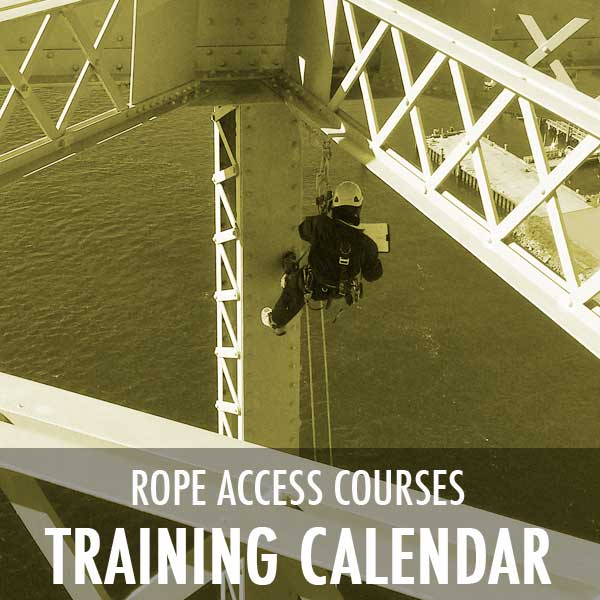International rope access certifying bodies standardize and develop industry-leading techniques for rope workers. Both IRATA and SPRAT boast standout safety records for their certified workers that ensure the viability of these services.
Rope Access workers use a double rope suspension systems and rigorous pre job setup methods to ensure that the most advanced safety measures are always taken. For both IRATA and SPRAT there is three progressive levels of training. The first level provides certification as a technician. Rope Access level I can safely and effectively use existing rigging setups under the supervision of a level two or three Rope Access Supervisor. They are also trained in some preliminary rescue and emergency procedures. One week minimum (40 hours) is required in order to successfully access to the first level of certification. Level II certification clears workers for setting up rigging, hauling and delivering more advanced rescue services. It typically takes a couple years of experience to reach this level of training. The third and final Rope Access Supervisor certification (Level III) provides the rigorous technical training necessary to manage a rope access worksite, provide rescue from any point and evaluate procedures according to standardized legislation. This is a long term achievement that require experience in decision making and supervisory skills. Most Rope access certifications last three years before renewal or re-qualification is necessary. Other Training Courses Available Are:How Training Works
Advancing to the Next Level
Hours to be completed
Rope Access Course
Level of Rope Access
0 hours (entry level)
40 hour course
IRATA Level I
Min. of 1 year and 1000 hours as a Level I
40 hour course
IRATA Level II
Min. of 1 year and 1000 hours as a Level II
40 hour course
IRATA Level III
0 hours (entry level)
40 hour course
SPRAT Level I
Min of 6 months and 500 hours as Level I (SPRAT)
40 hour course
SPRAT Level II
Min of 6 months and 500 hours as Level II (SPRAT)
40 hour course
SPRAT Level III



